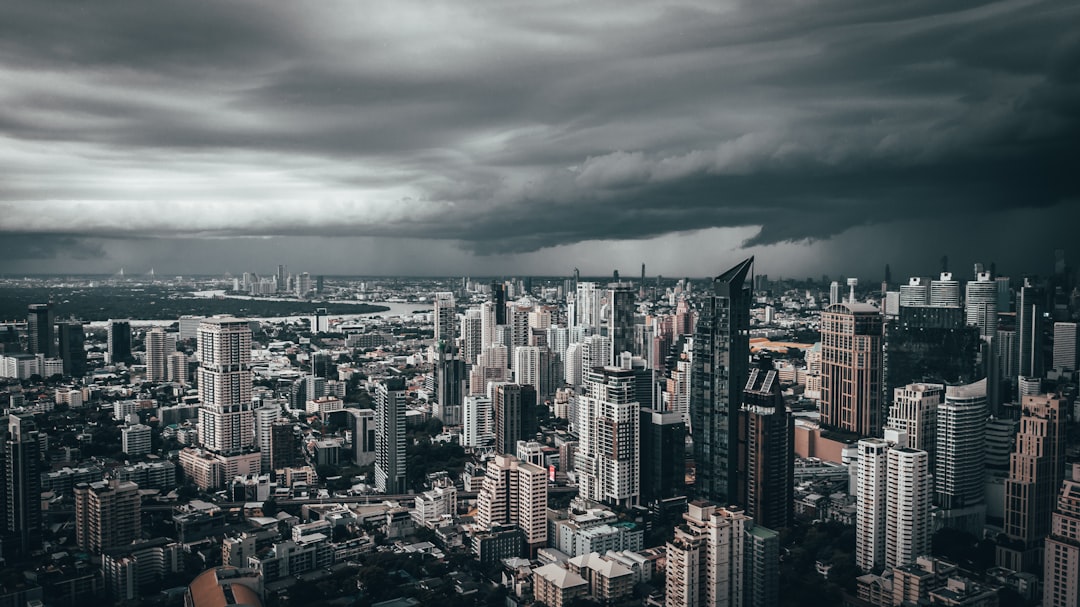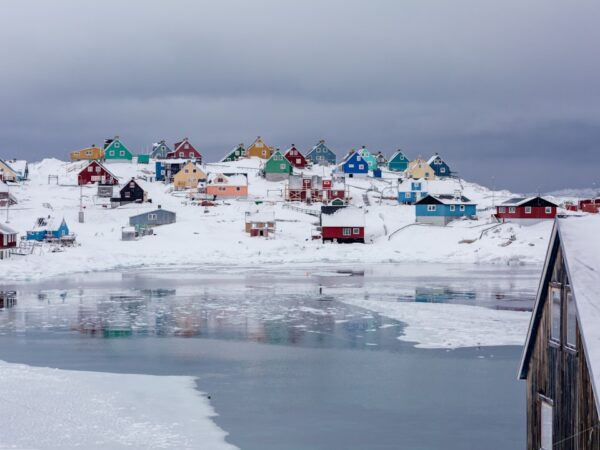
Trans-Siberian Rail Journeys: A Scenic Adventure
The Trans-Siberian Railway is one of the most iconic and legendary train journeys in the world. Spanning over 9,000 kilometers, it is the longest railway line in the world, connecting Moscow in the west to Vladivostok in the east. The journey takes travelers through diverse landscapes, from the bustling cities of Russia to the remote wilderness of Siberia. It is a popular travel destination for adventurers and train enthusiasts alike, offering a unique and unforgettable experience.
The Trans-Siberian Railway has gained popularity over the years due to its rich history, stunning scenery, and cultural diversity. It offers travelers a chance to explore the vastness of Russia and experience its unique blend of cultures and traditions. The journey is not just about reaching a destination; it is about immersing oneself in the beauty and charm of the Russian landscape and its people.
Key Takeaways
- The Trans-Siberian Rail Journey is a once-in-a-lifetime experience that takes you across Russia and Asia.
- The Trans-Siberian Railway was built in the late 19th century and played a significant role in the development of Russia.
- There are three main routes of the Trans-Siberian Railway, each with its own unique attractions and landscapes.
- The best time to take the Trans-Siberian Rail Journey is during the summer months, from June to August.
- The Trans-Siberian Railway offers stunning scenery, from the vast Siberian wilderness to the beautiful Lake Baikal.
The History of the Trans-Siberian Railway
The construction of the Trans-Siberian Railway began in 1891 and was completed in 1916. It was a monumental feat of engineering, spanning across eight time zones and through some of the harshest terrains on earth. The railway played a significant role in Russian history, connecting remote regions of Siberia to the rest of the country and facilitating trade and transportation.
Over time, the Trans-Siberian Railway has evolved to meet the changing needs of travelers. Today, it offers modern amenities and comfortable accommodations, making it an accessible and enjoyable journey for tourists from around the world. Despite these changes, the railway still retains its historical charm and sense of adventure.
The Different Routes of the Trans-Siberian Railway
There are several routes that travelers can choose from when embarking on a Trans-Siberian Rail journey. The classic route takes passengers from Moscow to Vladivostok, covering a distance of approximately 9,289 kilometers. This route offers a diverse range of landscapes, from the bustling cities of Moscow and Irkutsk to the remote wilderness of Siberia.
Another popular route is the Trans-Mongolian route, which takes travelers from Moscow to Beijing via Ulaanbaatar, the capital of Mongolia. This route offers a unique cultural experience, allowing passengers to explore the vast Mongolian steppe and visit the iconic Gobi Desert.
The Trans-Manchurian route is another option, taking passengers from Moscow to Beijing via Harbin, a city known for its ice and snow festival. This route offers a chance to experience Chinese culture and visit famous landmarks such as the Great Wall of China.
The Best Time to Take the Trans-Siberian Rail Journey
| Month | Temperature (°C) | Crowds | Scenery |
|---|---|---|---|
| January | -20 to -10 | Low | Snowy landscapes |
| April | -5 to 5 | Low | Spring blossoms |
| July | 15 to 25 | High | Lush greenery |
| October | -5 to 5 | Low | Fall foliage |
The best time to take the Trans-Siberian Rail journey depends on personal preferences and weather considerations. The peak tourist season is during the summer months of June to August when the weather is mild and the days are long. This is a popular time to travel as it allows for more daylight hours to enjoy the scenery and explore the stops along the way.
However, traveling during the off-season can have its advantages. The spring and autumn months offer cooler temperatures and fewer crowds, allowing for a more peaceful and intimate experience. Winter travel can be a magical experience, with snow-covered landscapes and the opportunity to witness traditional winter festivals in Russia and China.
The Scenery and Landscapes Along the Trans-Siberian Railway
One of the highlights of the Trans-Siberian Rail journey is the ever-changing landscapes that passengers will encounter along the way. From the lush forests of European Russia to the vast steppes of Mongolia and the rugged mountains of Siberia, there is something for everyone to enjoy.
The journey takes passengers through stunning natural wonders such as Lake Baikal, the deepest freshwater lake in the world. Here, travelers can witness the crystal-clear waters and explore the surrounding national parks. Other notable landmarks include the Ural Mountains, the dividing line between Europe and Asia, and the Gobi Desert, a vast expanse of sand dunes and rocky outcrops.
There are also several viewpoints and photo opportunities along the way, allowing passengers to capture the beauty of the landscapes. From the window of the train, travelers can witness breathtaking sunsets, snow-covered forests, and picturesque villages.
The Unique Cultures and Traditions of the Trans-Siberian Railway Stops
The Trans-Siberian Railway passes through regions with diverse cultures and traditions. Each stop along the way offers a unique glimpse into the local way of life. From the vibrant cities of Moscow and St. Petersburg to the nomadic tribes of Mongolia, there is a wealth of cultural experiences to be had.
Travelers can witness traditional customs and festivals, such as the Naadam Festival in Mongolia, where locals compete in traditional sports such as horse racing and wrestling. They can also explore local handicrafts and souvenirs, such as Russian nesting dolls or Mongolian cashmere.
The Food and Cuisine Along the Trans-Siberian Railway
Dining on the Trans-Siberian Railway is an experience in itself. The train offers a dining car where passengers can enjoy meals prepared by onboard chefs. The menu often includes a variety of Russian and international dishes, allowing travelers to sample different cuisines along the way.
Each region along the railway has its own specialties and delicacies. In Russia, travelers can try traditional dishes such as borscht (beetroot soup) or pelmeni (dumplings). In Mongolia, they can sample traditional dishes made from yak meat or dairy products.
The Accommodation Options on the Trans-Siberian Railway
The Trans-Siberian Railway offers different classes of cabins to suit every traveler’s needs. The most basic option is the third-class cabin, which consists of open-plan compartments with bunk beds. This is a budget-friendly option for those who are looking to save money.
The second-class cabin offers more privacy, with compartments that can accommodate up to four people. These cabins are equipped with beds, storage space, and a small table. The first-class cabin offers the most comfort and privacy, with private compartments that include a bed, seating area, and en-suite bathroom.
The Activities and Excursions Along the Trans-Siberian Railway
There are plenty of activities and excursions to enjoy along the Trans-Siberian Railway. Each stop offers unique sightseeing opportunities and cultural experiences. Travelers can explore the historic cities of Moscow and St. Petersburg, visit the ancient city of Kazan, or take a boat trip on Lake Baikal.
Outdoor enthusiasts can go hiking in the Altai Mountains or horseback riding on the Mongolian steppe. Cultural experiences include attending traditional performances, visiting local markets, or participating in traditional crafts workshops.
Tips for Planning and Preparing for Your Trans-Siberian Rail Journey
When planning a Trans-Siberian Rail journey, it is important to book tickets in advance, especially during the peak tourist season. It is also advisable to plan your itinerary carefully, taking into consideration the duration of the journey and the stops along the way.
Packing for the journey should include comfortable clothing and footwear, as well as essential items such as toiletries and medication. It is also important to consider safety and security considerations, such as keeping valuables secure and being aware of your surroundings.
In conclusion, the Trans-Siberian Rail journey is a must-do travel experience for adventurers and train enthusiasts alike. It offers a unique opportunity to explore the vastness of Russia and experience its diverse landscapes, cultures, and traditions. Whether you choose to travel during the peak tourist season or during the off-season, the Trans-Siberian Railway promises an unforgettable journey filled with stunning scenery, delicious cuisine, and cultural immersion. Start planning your own Trans-Siberian adventure today!
FAQs
What is the Trans-Siberian Express?
The Trans-Siberian Express is a railway network that spans across Russia, connecting Moscow in the west to Vladivostok in the east. It is the longest railway line in the world, covering a distance of over 9,000 kilometers.
What are the different routes available on the Trans-Siberian Express?
There are three main routes available on the Trans-Siberian Express: the Trans-Siberian Route, the Trans-Mongolian Route, and the Trans-Manchurian Route. The Trans-Siberian Route runs from Moscow to Vladivostok, the Trans-Mongolian Route runs from Moscow to Beijing via Mongolia, and the Trans-Manchurian Route runs from Moscow to Beijing via China.
What is the duration of a typical journey on the Trans-Siberian Express?
The duration of a typical journey on the Trans-Siberian Express depends on the route and the stops along the way. A journey on the Trans-Siberian Route from Moscow to Vladivostok takes around 7 days, while a journey on the Trans-Mongolian Route from Moscow to Beijing takes around 14 days.
What are the facilities available on the Trans-Siberian Express?
The facilities available on the Trans-Siberian Express vary depending on the class of travel. First-class cabins usually have private bathrooms and showers, while second-class cabins have shared bathrooms and showers. There are also dining cars, observation cars, and sometimes even a bar or lounge car.
What are the best times to travel on the Trans-Siberian Express?
The best times to travel on the Trans-Siberian Express are during the summer months of June to August, when the weather is mild and the days are long. However, this is also the peak tourist season, so it can be crowded and expensive. Spring and autumn are also good times to travel, as the crowds are smaller and the scenery is beautiful. Winter can be a challenging time to travel, as the temperatures can drop to below freezing and the snow can cause delays and disruptions.


















